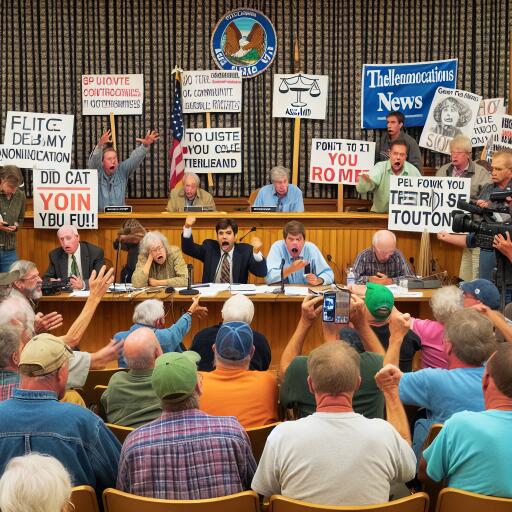Ashland’s Telecommunications Ordinance Stirring Up Community Debate
In Ashland, a city known for its vibrant community and picturesque landscapes, a debate over technological advancement versus community wellbeing is unfolding. The city council is on the brink of a pivotal vote that could reshape Ashland’s telecommunications landscape, one that has not seen significant change in nearly three decades.
This Tuesday, the Ashland City Council is set to cast their final votes on a revised telecommunications ordinance. The stakes are high as this revision has been at the center of a heated discourse. At the heart of the matter is the introduction and regulation of 5G technology, which, despite its promise of faster connectivity, has been met with opposition from a segment of the Ashland community.
The organization Oregonians for Safer Technology, spearheaded by Kelly Marcotulli, has been vocal about their concerns regarding 5G, citing potential health risks linked to electromagnetic radiation (EMF). They argue that the speed of technological advancements should not outpace considerations for public health and are pushing for Ashland to set a precedent in telecommunications regulations for the state of Oregon.
However, Councilor Jeff Dahle, with a background in engineering and technology, counters that public policy needs to balance innovation with resident concerns. Dahle emphasizes that federal regulations limit the extent to which local governments can restrict telecommunications infrastructure due to health concerns. He underlines the evolutionary nature of technology, explaining that the fundamentals of digital communication haven’t changed – only the speed and efficiency have improved.
Dahle explains the layout of cell towers and the technological imperative for 5G’s higher frequency signals, which necessitate closer tower placements. He reassures that while concerns about EMF are understandable, the levels of ionizing radiation from 5G are far less harmful compared to natural sources like the sun.
The revision of Ashland’s telecommunications ordinance has prompted a flood of community input, with emails pouring into Dahle’s inbox from both supporters and opponents of 5G. While some residents echo Marcotulli’s concerns about potential health risks, others are enthusiastic about the benefits of 5G, particularly in terms of improved internet connectivity and supporting the proliferation of smart devices.
The discourse took a tense turn with the city council receiving an anonymous and vaguely threatening email demanding a halt to the ordinance’s progression. Meanwhile, public consultations have seen accusations of dishonesty and misrepresentation, intensifying the debate surrounding the ordinance.
Despite the controversy, the Ashland City Council made strides by approving the first draft of the ordinance, signaling a cautious yet forward-looking approach to telecom regulations. The ordinance outlines provisions for compliance with federal guidelines, design standards sensitive to historic districts, and the gradual introduction of 5G technology in select areas.
The proposed ordinance revision aims for a balanced approach, ensuring technological infrastructure development does not outpace the city’s character and health considerations. As Ashland stands at the cusp of this technological shift, the outcome of the upcoming council vote could set a precedent on how smaller communities navigate the complexities of modern telecommunications amidst diverse public opinions.
While the deployment of 5G technology in Ashland is poised for a slow and careful rollout, questions linger about the long-term implications for wireless capability and connectivity in an increasingly digital world. The community’s engagement in this debate echoes a broader national conversation about balancing technological advancement with public health and community values.
The city council’s decision will not only shape the future of telecommunications in Ashland but also serve as a case study for other municipalities grappling with similar challenges. As the vote approaches, the community’s eyes are fixed on the city council, awaiting a decision that could redefine what it means to be connected in the 21st century.









